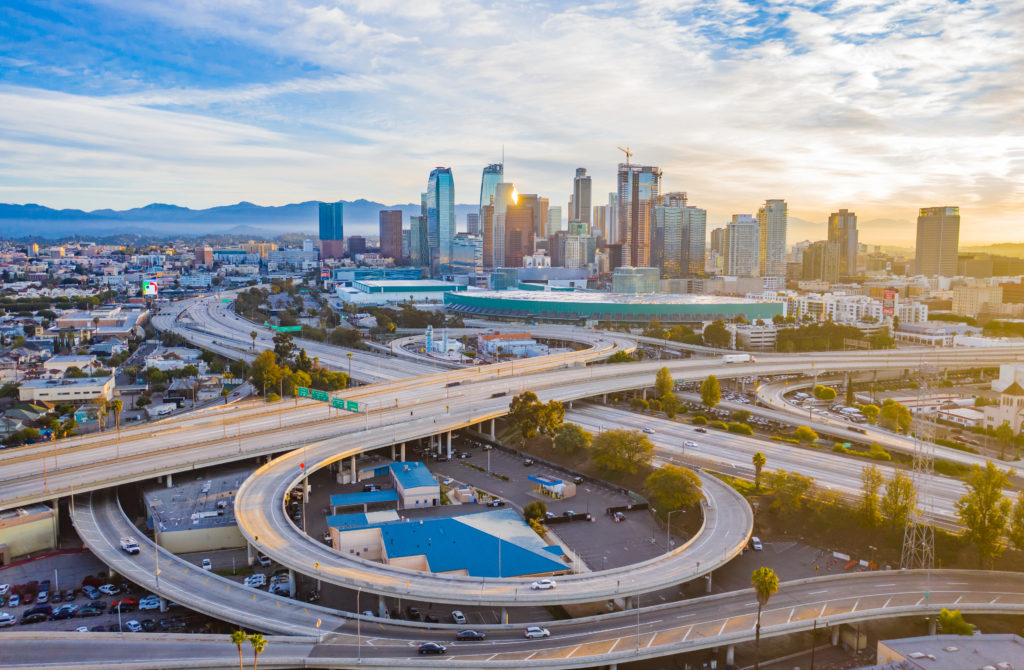
“Mr. Scott, damage report.”
Wouldn’t it be great if like Captain Kirk, we could call down to the bridge to get an accurate assessment of 2020, and how radio and our stations are recovering lost listening?
As the COVID outbreak continues to evolve, radio broadcasters continue the process of tracking the health of its stations since things got out of control coming up on a year ago. The financial data is easy to measure, and yes, the ratings provide key indicators of growth, decay, or plateauing.
We know that for most radio stations, in-car radio listening is one of the key variables – the medium’s bread and butter. In our soon-to-be-released Techsurvey 2021, we devoted questions designed to help evaluate driving changes and their potential impact on radio listening.
Nielsen also continues to track their “out of home” listening in the nation’s biggest – and theoretically, most congested – markets when it comes to traffic. But in PPM, we don’t get that helpful distinction between “in car” and “at work.” And while they are both of great importance to radio managers, their contributions to ratings gains and losses are different.
So, how can we accurately know just how the pandemic wreaked havoc on traffic patterns in various markets, and what effect it may – or may not – play on the health of a radio station?
For starters, we can do market research to find out. But for so many stations, that’s a non-starter due to the lack of financial resources. And even if you could afford a research study, you’d have no previous information for comparison. Asking about driving habits right now would be helpful, but without pre-pandemic benchmarks to get a sense for how things are today – and how they’ve been trending.
The GPS makers – TomTom – to the rescue.
They have a nifty TomTom Traffic Index with lots of answers. You can get the world view, like this heat map showing traffic congestion. Here I’ve compared February, when things were “normal” to April when the lockdowns were plentiful. It tells a story.

(The video version is available here, so you can watch all of 2020, from start to finish.)
TomTom tracks 416 cities around the world, and that covers much of the U.S. You can dive into Phoenix, Chicago, or Tampa and pull up an extensive list of trends and rankings that help fill out the picture.
Here’s a chart for Seattle, showing traffic on a day-to-day basis, including shading for COVID restrictions (which started earlier in the state of Washington):
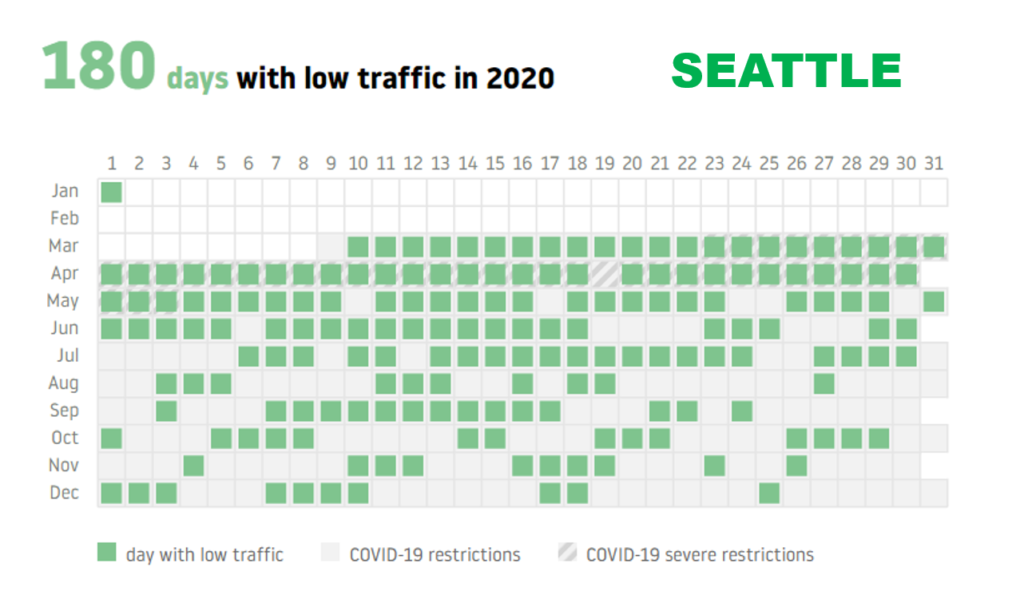
For the year, Seattle traffic congestion was down 39% compared to 2019. You have to wonder how that might compare with PUMM levels in the market, especially during the least congested months.
But radio cares most about drive times – the dayparts where the industry typically invests the most. And where ratings success – or failure – is often determined. Looking at New Orleans, for example, listening levels took a nose dive in April, recovered in the summer, and stabilized near the end of the year. Still, morning drive was down 34% for the year, and afternoon was down 29%:
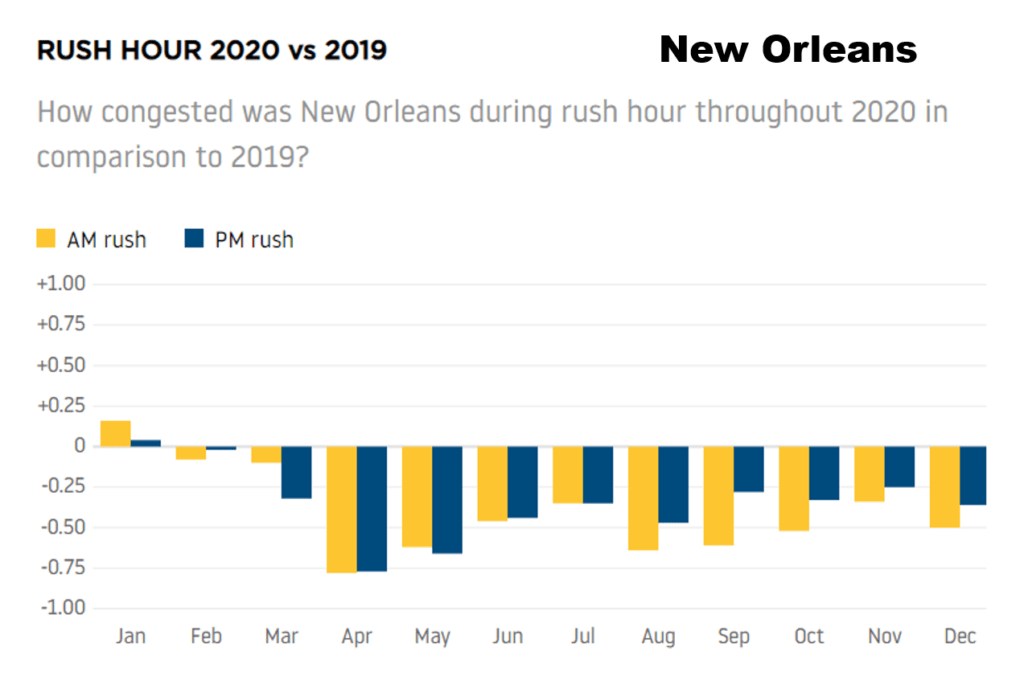
How might that translate to radio listening – specifically, quarter-hours? TomTom breaks it down. Here’s Boston – with minute-by-minute losses in 2020. (Note: TomTom shows time saved per trip with a plus sign, but in radio terms, it would make more sense to see this minute rate preceded by a minus sign.)
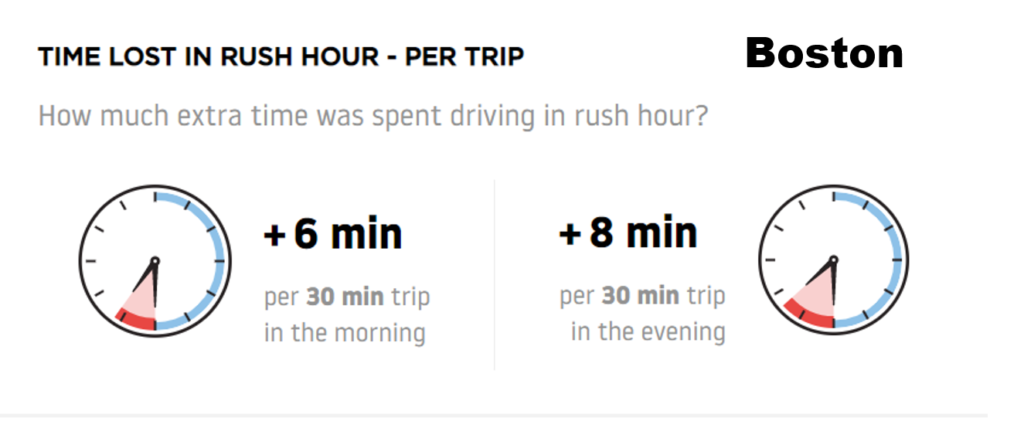
That’s a quarter-hour of listening lost in a typical 30 minute commute in both drives. And perhaps it leads us to a new metric: TLD – or Time Lost per Daypart. Imagine what that would look like for the Spring 2020 ratings period in most markets.
I also looked at some comparisons between what Nielsen was showing and TomTom’s market index. Here’s Riverside, CA, from last May, ranked as the worst PPM market for listening recovery compared to pre-COVID levels (right), contrasted with month to traffic patterns for the market (left):
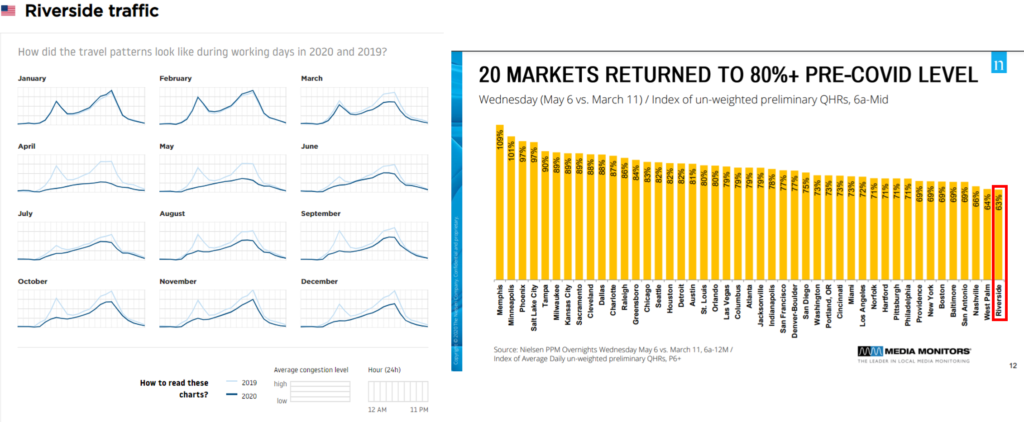
In our ongoing quest to understand what’s going on with in-car radio listening in our markets – and specifically, to the stations we care most about – this TomTom data is eye-opening – for programming, sales, and in some cases, to share with clients and marketing partners.
The good news is that traffic is getting worse.
And that, I never thought I’d say.
You can access the TomTom Traffic Index here.
- What To Do If Your Radio Station Goes Through A Midlife Crisis - April 25, 2025
- A 2020 Lesson?It Could All Be Gone In A Flash - April 24, 2025
- How AI Can Give Radio Personalities More…PERSONALITY - April 23, 2025




Very interesting data analyses, Fred. Ever the iconoclast, however, I confess that because I retired in 2017 and thus no longer commute to an office, the pandemic’s impact on me has been muted–I’m at home most of the time–and my radio listening has only increased! I find no shortage of interesting things to tune my dial to. Can’t radio managers and programmers envisage a role for radio in a world that drives less than it used to? One of radio’s great strengths has always been that, unlike TV and all its video cousins, radio doesn’t lash you to a chair; it can easily accompany you wherever you go, even if that doesn’t involve a car.
So, sure, cater to those trapped by “drive time” as long as that phenomenon exists, but also plan how to capture those ears when they’re not stuck behind the wheel. It can be done.
You’re not alone, John. Our research has shown that while some people have listened less to the radio since COVID (many are at home & they may not have a radio nearby), many others (like you) have actually engaged more with radio. They have more time and/or their favorite station(s) have raised awareness about alternative ways to listen (the computer, app, Alexa, etc.).
Bottom line: we need to do both – continue to talk to people in cars driving to and from work (albeit in less traffic) and home and office-bound people who might listen more if they were up to speed with all the ways to do it.
Thanks for the comment.
Great comments, John and Fred.
Your comment, John, made me think of how much more I listen to the radio outside the car than in it–I’m thinking things like in the kitchen or bathroom or in the yard–or even at the park with a friend while playing tennis or tossing a frisbee. Radio is the “thing you can do” while doing almost anything. And for me, having a smart speaker has only increased how much I listen at home. At first I was hesitant, somehow feeling I was being “unfaithful” to my first audio love, radio. But there’s something awfully nice about being across the room and telling Alexa to put on my favorite station, and that ease has me listening even more.
Bottom line, as you said, Fred, is radio needs to reach out to both. What a great reminder that radio is that friend you can always have with you, anywhere, anytime. A good reminder both for radio and those who want to reach the ears of its audience.
Dave, I wish more people were using Alexa and mobile apps to listen to radio. There’s been growth during the pandemic, but I maintain radio needs to do a better of “meeting listeners where they are,” AND reminding them stations are available on these “new” platforms. Thanks for chiming in.
Ha, just thought of something funny that has happened to me a few times. I’ll be listening to something real interesting on the radio in the car, but then I get home. Well, no more “sitting in the car listening because you can’t turn it off” (which actually is a good thing and says much about your content), now I can simply walk inside, tell Alexa to put the station on, and by the time it buffers out, it actually meets pretty close to where it left off in the car! (Who says buffering is necessarily a bad thing?!) (Note, if radio ever returns to the golden days of “Caller 9 wins,” do NOT use Alexa!)
Interesting how you can use technology to make that delay work in your favor. And we WILL return to the 9th caller.
Damn! In the name of James Taylor, I missed this one when it was first published. Thank goodness your blog posts, like our “best of” radio highlights, are available on demand.
This is AWESOME data and analysis, Fred. And great comments above as well.
We’re in sort of a new golden age of radio, when great content and stations are instantly available any time. I find myself listening to a distant station in my car, via my phone, then simply turning off the engine, disconnecting the phone and walking inside while still listening.
It’s part of our mission now as broadcasters to keep conveying these “ease of listening digitally” reminders to our audience until everyone catches up.
One question arises from this data: Due to COVID-driven listening disruption, will middays supplant drive times as the most important day part?